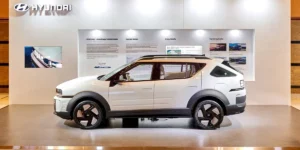Lithium Ion Battery Recycling Process

Today, lithium-ion batteries are being used in everything from laptops and mobile phones to electric cars and grid-scale energy storage devices. These batteries are rechargeable and ideal for various applications due to their low self-discharge, long cycle life, and high energy density. Similar to all batteries, lithium-ion batteries come with a short lifespan and need to be replaced sooner or later.
The recycling process is essential for several reasons, including reducing the demand for new materials, recovering valuable materials, and reducing the environmental impact of disposal. In this article, we will discuss what lithium-ion batteries are, what they are used for, and the recycling process, including the benefits of recycling.
What are Lithium-Ion Batteries?
Lithium-ion batteries are rechargeable batteries that use lithium ions as the primary active material. These batteries offer a number of advantages and have high energy density when compared to other battery types like lead-acid or nickel-metal hydride batteries.
Lithium-ion batteries consist of an anode, a cathode, a separator, and an electrolyte. Commonly, the cathode is composed of metal oxide, and the anode is composed of graphite. These electrodes are partitioned by a thin polymer film called a partition. The gel or liquid that allows the free movement of ions between the cathode and anode is known as an electrolyte.
What are Lithium-Ion Batteries Used For?
Lithium-ion batteries are used in several applications, including energy storage systems, electric vehicles, and portable electronics. These batteries are used to power tablets, laptops, smartphones, and other devices in portable electronics.
The electric motor in electric cars is powered by lithium-ion batteries to provide energy for systems like lights and air conditioning. Lithium-ion batteries are also used in energy storage systems (i.e., those used in grid-scale applications) to store energy created by renewable sources, such as wind power and solar. This stored energy will be used during periods of high demand.
Lithium-Ion Battery Recycling Process: How is a Lithium-Ion Battery Recycled
We can recycle lithium-ion batteries to decrease the environmental effects of disposal and to recover valuable materials. There are several steps in the recycling process of a battery, including collection, sorting, processing, and further processing as required.
Collection, Sorting & Processing
The collection is the first step in the recycling process of lithium-ion batteries. We can get lithium-ion batteries from different sources, including energy storage systems, electric vehicles, and consumer electronics. Mail-in programs, drop-off locations, or municipal recycling programs are involved in the collection of these batteries. In the collection step, it is essential to carefully handle the batteries to prevent any short circuits or damage. Lithium-ion batteries are classified on the basis of their physical and chemical characteristics.
Lithium-ion batteries are differentiated on the basis of anodes and cathode types. By classifying batteries, we can identify damaged batteries or the ones with impurities that can impact the recycling process.
After being sorted, the batteries are further processed to get usable materials. The type of battery and material to be recovered is the basis of specific processing methods. Pyrometallurgical processes, hydrometallurgical processes, and mechanical crushing are standard processing methods.
Mechanical Crushing and Hydrometallurgical Processes
In mechanical crushing, batteries are broken down into small pieces by using shredders and crushers. Magnetic separators and screens are then used to separate the resulting material into different fractions. Batteries with high percentages of useful metals, i.e., copper, nickel, and cobalt, are usually processed in this way. During the recycling process, a highly essential and useful metal, copper, is recovered from the black mass of the battery.
Hydrometallurgical processing is used for the recovery of copper from the black mass of the battery. In this process, materials are dissolved in acid to get the copper. It is a complex process and requires expertise and special equipment.
Solution offered by Emew minimizes the challenges associated with SX/IX (Solvent Extraction/Ion Exchange) and the precipitation of copper sulfides. This solution entails a straightforward two-step approach to copper recovery. In the initial phase, over 90% of the copper is selectively extracted from the black mass leachate, thereby converting it into top-grade copper cathodes with the requisite quality for foil production. Subsequently, the remaining copper is entirely eliminated in the selective emew process during the subsequent stages, culminating in the production of battery-grade salts.
Finally, The Pyrometallurgical Processes
Pyrometallurgical processes involve using high temperatures to melt and separate the metals in the battery. This process is typically used for batteries with low amounts of valuable metals, such as those used in consumer electronics. The resulting molten metal can be cast into ingots or further refined to recover additional metals.
Conclusion
Lithium-ion batteries are vital in many modern technologies, but they have a limited lifespan and eventually need to be replaced. Recycling these batteries is essential for several reasons, including reducing the environmental impact of disposal, recovering valuable materials, and reducing the demand for new materials.
The recycling process involves several steps, including collection, sorting, and processing, and can provide several benefits, including environmental, economic, and social benefits. As the use of lithium-ion batteries continues to grow, it is important to prioritize their responsible disposal and recycling to ensure a sustainable future.





